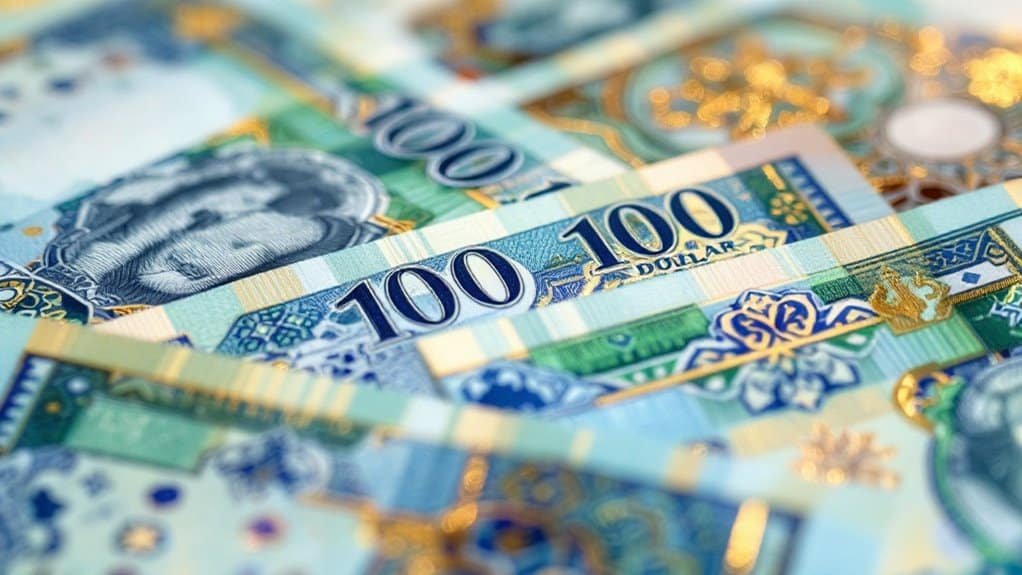
The Brunei dollar represents a strategically engineered currency pegged 1:1 to the Singapore dollar, offering you a stable monetary framework through its Currency Board Arrangement. You'll find its polymer banknotes range from $1 to $10,000, featuring sophisticated anti-fraud technologies like holographic elements and security threads. Interchangeable with Singapore's currency since 1967, it minimizes transaction costs and mitigates financial risks. Managed by the Brunei Darussalam Central Bank, this currency guarantees economic predictability by aligning monetary policies with Singapore's financial conditions. The intricate design reflects cultural identity through bilingual text and advanced security features. Curious about the nuances behind this financial ecosystem?
Key Takeaways
- The Brunei dollar is pegged 1:1 to the Singapore dollar, creating a stable Currency Board Arrangement that minimizes exchange rate risks and imported inflation.
- Brunei's currency features polymer banknotes with advanced security measures, ranging from $1 to $10,000, and includes bilingual text in Malay and English.
- Established in 1967, the Brunei dollar represents a significant milestone in the country's financial independence, evolving from traditional exchange methods like cowrie shells.
- The Brunei Darussalam Central Bank (BDCB) manages currency issuance, supervises financial institutions, and maintains monetary stability through strategic economic policy frameworks.
- Currency interchangeability with Singapore, minimal exchange rate fluctuations, and a predictable financial environment support regional trade and investment opportunities.
Understanding Brunei's Monetary Framework
The Brunei dollar's monetary framework represents a sophisticated currency management system rooted in the Currency Board Arrangement. Bilateral economic cooperation between Brunei and Singapore strengthens this unique monetary approach.
By pegging the Brunei dollar to the Singapore dollar at a one-to-one parity, the system effectively removes exchange rate risks and provides a mechanism for inflation control.
The Brunei Darussalam Central Bank can't independently manipulate monetary policy, instead aligning with Singapore's monetary conditions.
This strategic framework delivers significant economic advantages: it minimizes imported inflation, anchors monetary expectations, and promotes macroeconomic stability.
You'll appreciate how the arrangement creates a predictable financial environment that supports trade, investment, and economic resilience.
Currency Design and Denominations
Since the inception of Brunei's currency, its banknote design and denominations have reflected a sophisticated blend of cultural symbolism, technological innovation, and monetary policy objectives. Currency historical progression reveals that Brunei transitioned through multiple banknote series since 1967, each representing a technological and security milestone.
You'll find that Brunei's currency ranges from $1 to $10,000, with each denomination strategically colored and designed to prevent counterfeiting. The shift to polymer notes in 2004 marked a significant advancement in banknote security, introducing enhanced durability and sophisticated anti-fraud features like holographic elements and window security threads.
Each note meticulously incorporates multiple layers of protection: gold foil, fluorescent national crest visibility under UV light, and precise intaglio printing.
Importantly, the banknotes showcase bilingual text in Malay (Rumi and Jawi) and English, ensuring both cultural representation and international accessibility.
The intricate design principles demonstrate Brunei's commitment to monetary integrity and technological sophistication.
Exchange Rates and Interchangeability
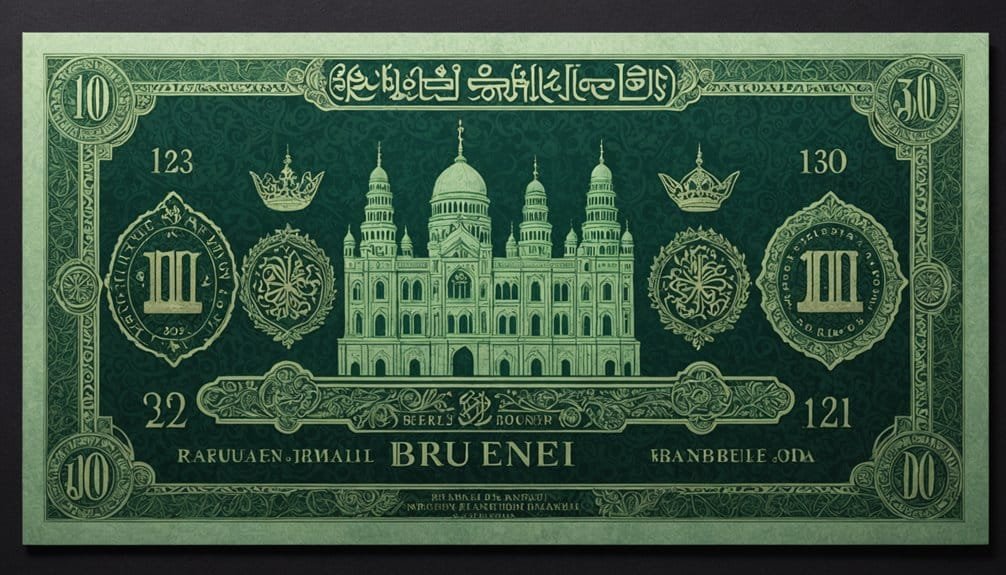
Currency dynamics and bilateral financial mechanisms illuminate Brunei's sophisticated monetary landscape, particularly through its unique exchange rate structures and cross-border currency interchangeability.
You'll observe the BND's stable performance, with a current exchange rate of 1 USD to 1.34285 BND and minimal 30-day fluctuations between 1.3208 and 1.3494.
The strategic currency interchangeability with Singapore, maintained since 1967, creates significant economic advantages.
You'll find that this arrangement reduces transaction costs and mitigates currency risks, facilitating seamless financial interactions.
These currency trends demonstrate how monetary cooperation can drive economic integration.
The bilateral agreement enables mutual currency acceptance, attracting foreign investments and supporting robust financial ecosystems in both Brunei and Singapore.
This precise monetary strategy underscores the economic impact of strategic financial partnerships.
The daily rate tracking provides real-time insights into the BND's market performance, enabling investors and financial professionals to make informed decisions about currency exchange and investment strategies.
Historical Evolution of Brunei's Money
How did Brunei's monetary landscape transform through centuries of trade and colonial interactions? From ancient transactions involving cowrie shells and bronze teapots to sophisticated currency systems, Brunei's monetary evolution reflects its complex historical trajectory.
Indigenous coinage with Arabic inscriptions symbolized early cultural identity, while Spanish-American silver dollars facilitated international trade. The colonial era introduced strategic currency shifts, from Straits dollars to Malayan currency, demonstrating the region's economic adaptability. Polymer banknotes introduced in 2004 further modernized Brunei's currency representation, replacing traditional paper series and showcasing technological advancement in monetary design.
In 1967, Brunei established its sovereign currency, the Brunei dollar, marking a pivotal moment in national financial independence. The Currency Act of 1967 defined precise gold-to-dollar parity, signaling a technical approach to monetary policy.
This change encapsulated currency symbolism, transforming from colonial-era instruments to a distinctive national economic representation that continues to define Brunei's fiscal landscape.
Monetary Authority and Policy Roles
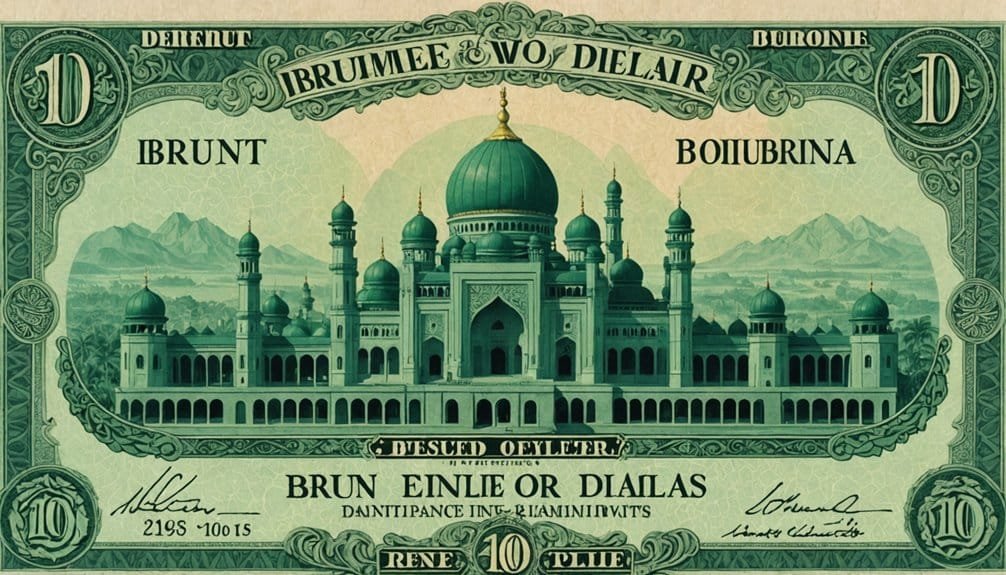
The resilience of a nation's financial infrastructure hinges on its central banking institution. In Brunei Darussalam, the Central Bank (BDCB) plays a pivotal role in maintaining monetary stability through robust financial regulations.
You'll find that this institution meticulously manages the country's monetary policy, issuing currency and supervising financial institutions with precision. The bank actively publishes economic indicators like the Business Sentiment Index to provide comprehensive insights into the nation's economic landscape.
BDCB's framework, anchored by the Currency Board Arrangement and the Currency Interchangeability Agreement with Singapore, guarantees economic predictability.
You'll appreciate how the bank strategically pegs the Brunei dollar to the Singapore dollar, creating a stable monetary environment.
Conclusion
As you explore the Brunei dollar's intricate landscape, you'll realize its significance extends beyond mere currency. Its unique interplay with Singapore's dollar hints at deeper economic narratives waiting to be unraveled. Will Brunei's monetary strategy continue to evolve, or remain anchored in its historical foundations? The currency's journey reflects not just economic transactions, but a nation's complex financial identity and strategic positioning.

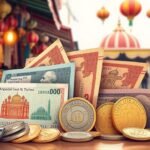
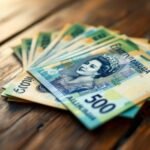
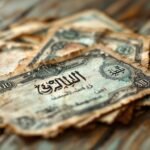
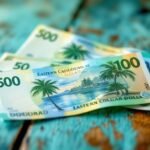
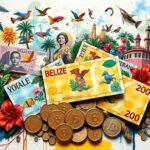
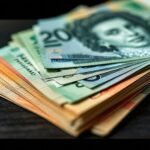
Interesting read, but Im curious, why does Brunei share its currency with Singapore? Isnt having an independent currency better for managing their own monetary policies? Any economists in the house?
Interesting read! But dont you think the Brunei Dollars interchangeability with the Singapore Dollar might potentially undermine Bruneis Monetary Sovereignty? Just a thought.
Interesting read. But dont you guys think the Bruneis monetary framework might be more robust if they pegged their currency to a basket of currencies instead of just the Singapore Dollar? Just a thought.
Interesting read, but dont you think Bruneis monetary framework could be more diversified to ensure economic stability?
Interesting read, but isnt it time we talked about the environmental impact of producing physical currencies like Bruneis? Just food for thought.
Interesting read! Considering the currencys design, has anyone else noticed the striking similarity to Singaporean notes? Coincidence or intentional? Thoughts, anyone?